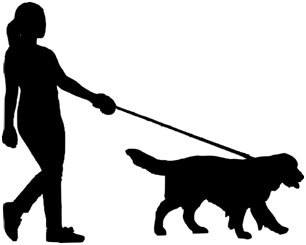
Should I Spay/Neuter my Pet?
Should I Spay/Neuter my Pet?
Let’s talk spaying and neutering. First of all, what’s the difference? Both terms refer to the sterilization of pets, but spaying is mostly used when talking about females as it is the ovariohysterectomy - or the removal of the ovaries, and neutering is used when talking about males, as it is the orchiectomy - or the removal of the testicles.
Now that we’ve settled the verbiage, let’s get down to business.
So should I spay or neuter my pet? The short answer is yes.
But let’s get a little deeper. There are a handful of reasons as to why you should spay/neuter your pet. Overall health, behavior, longevity of life, and population control.

Overall Health
The act of spaying/neutering your pets can greatly reduce the risk of major illness later in life. Female dogs that are spayed very rarely develop mammary cancer. Plus, unspayed dogs have a 200x greater chance for breast cancer than those that have been spayed before their first heat. Even dogs that are spayed after their first heat are 10x less likely to get cancer than those who haven’t been spayed at all. On the male side, neutering completely eliminates the possibility of developing testicular cancer, and is purported to reduce the risk of prostate cancer as well.

Behavior
Now let’s talk behavior. Male dogs who have yet to be neutered tend to be more territorial and will mark (and yes, I do mean pee!) indiscriminately, even all over the house. Intact males will also go to great lengths to find a mate, and are more likely to roam away from home, putting them in danger of being hit by a car or getting into fights with other, unknown dogs. In their journey to find a mate, they’ll also be far more inclined to hump… everything. Other dogs, the couch, your leg. Having your male dog neutered reduces the amount of testosterone in their body and can be used as a behavioral modification mechanism to calm overly excited dogs. It’s not a guarantee, however, as it doesn’t eliminate all the testosterone in their body, so be sure to give us a call if you have any behavior concerns and we’ll help figure out a solution that best suits you and your pet. Unspayed females will go into heat for four to five days every three weeks during breeding season. It’s as messy as it sounds, doggy diapers and all.

Longevity of Life
Our primary concern is always the health and happiness of your pet. What we can do, together, to ensure you share a long life - filled with walks at the park, a million games of catch, and countless belly rubs. The main reason you’re reading this right now is because you love your furry best friend and you want to make sure they stick around for as long as possible. Spaying/neutering gives you the best chance to make that happen. Pets that are fixed tend to live longer - they’re less likely to roam, which can put them in harm’s way. They’re less likely to develop mammary/testicular cancer. They’re more likely to be there, tail wagging, when you walk through the door. They’re more likely to spend their lives as your loyal companion, happy and healthy.

Population Control
Nationwide, upwards of 1.5 million healthy, adoptable dogs and cats are euthanized each year simply because there just aren’t enough homes to go around. 6.5 million companion pets enter US animal shelters every year. These are unwanted litters of puppies and kittens, they are family pets who lost their homes, they are dogs and cats just like your furry best friend. And that’s just the shelters. It’s estimated that the feral cat population in the United States is over 50 million. Spaying/neutering your pets is the only form of birth control that is one hundred percent successful. Those intact dogs that are roaming to find a mate? Imagine they hump an unspayed female and that results in a litter of puppies, puppies you may never even know exist. Imagine your female is in heat and your friend brings their new dog over to socialize but they forget to tell you they have yet to be fixed. Surprise! Puppies! To ensure there are no surprises, getting your pets spayed/neutered is important.
I want to spay/neuter my pet, now what?
The first step when you acquire a new friend is to make an appointment for a physical examination. There we can structure a plan for the happiest, healthiest life for you and your pet.














